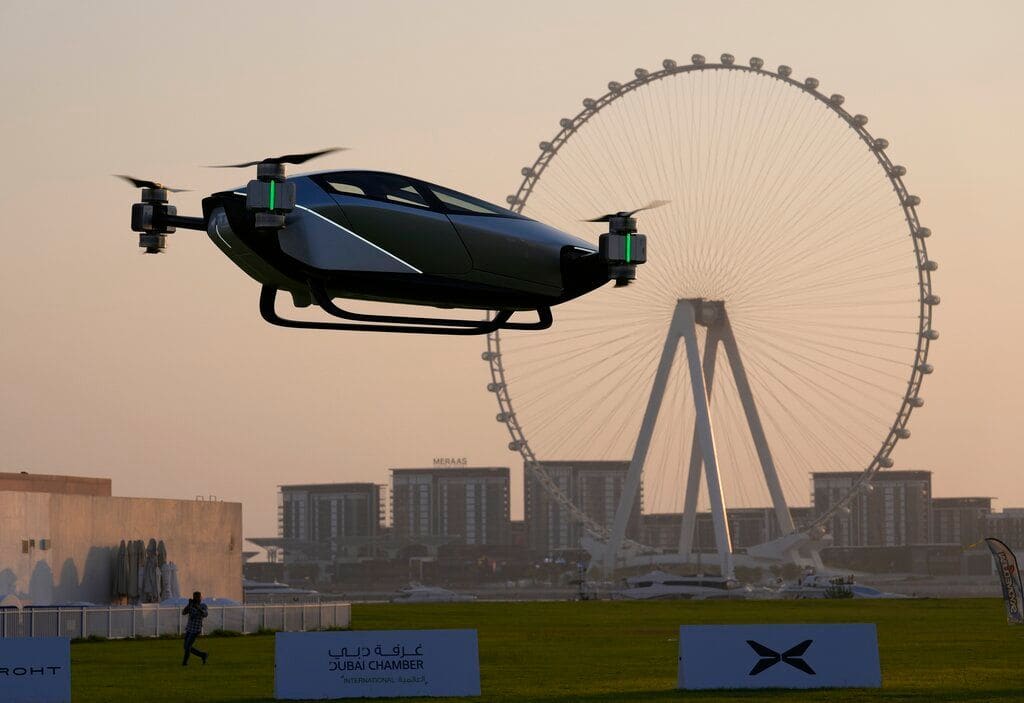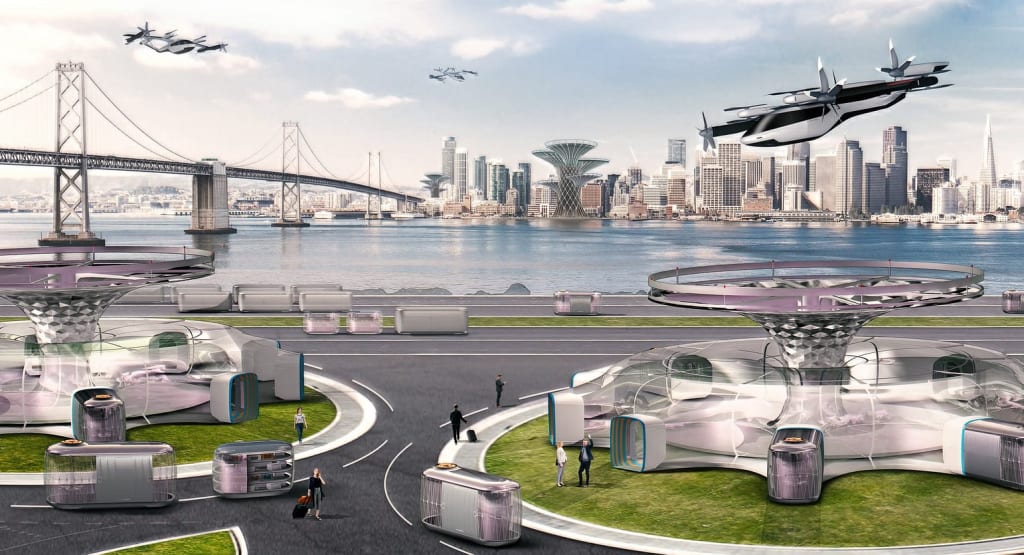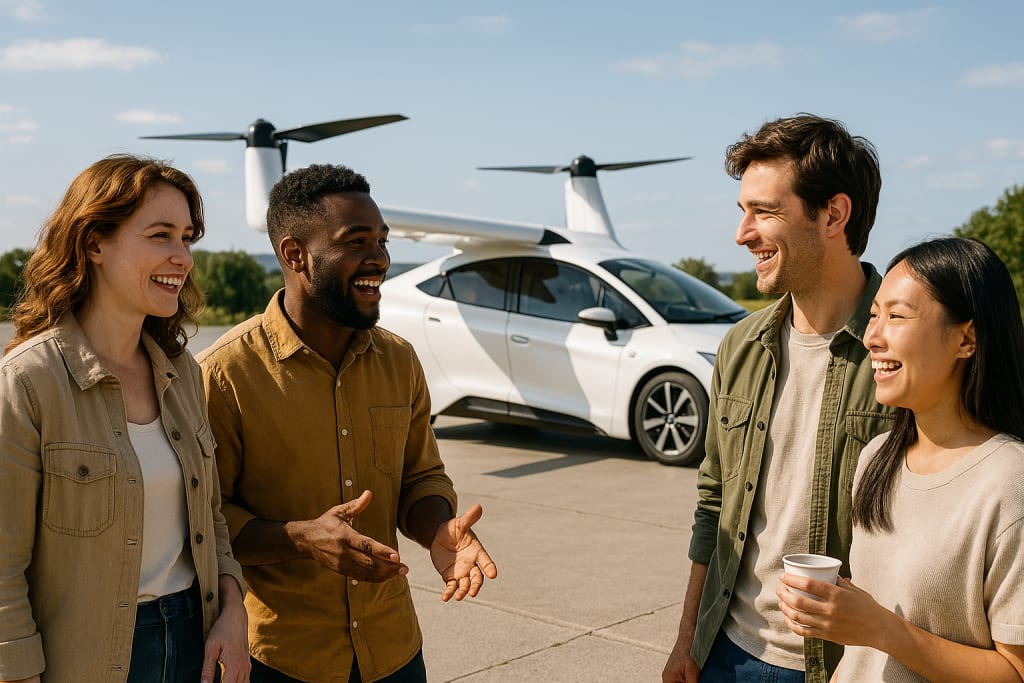Life After Lift-Off: Surprising Ways Flying Cars Could Change Everything

Most discussions about flying cars focus on speeding up the daily commute. But electric vertical takeoff and landing (eVTOL) aircraft promise a much bigger shift. These futuristic vehicles are quickly becoming real—and they may reshape how we live, work, and interact with our communities.
Emergency Services in Healthcare

One of the most powerful uses for flying cars may be in emergency healthcare. Traditional ambulances face delays from traffic, and studies show that every extra kilometer to the hospital raises the risk of death by 2%. Flying cars could eliminate these dangerous delays entirely.
SkyAngels Air Ambulance has partnered with PAL-V to add flying cars to their rescue fleet. The PAL-V Liberty works both as a car and an aircraft, making it more reliable during bad weather or in areas without road access. They’ve seen how these vehicles can reach emergency scenes faster and more efficiently than ground ambulances!
Real-world tests show huge potential. Jetson’s eVTOL aircraft can cut response times by up to 70%. In China, the V2000CG CarryAll completed a 58-minute cargo flight to deliver emergency medical supplies to oil platforms 150 kilometers offshore. For rural and remote areas, this kind of innovation could be lifesaving.
Tourism and Recreation

Flying cars could open up exciting new ways to explore and enjoy leisure time. Instead of sticking to fixed routes, tourists might reach places that were once out of reach—and enjoy stunning aerial views along the way.
In fact, hotels are already planning for this shift. Some are creating “fly-in” packages that let guests arrive in flying cars, with panoramic views included. Rooftop events, known for their skyline scenes, could be taken to the next level—literally—with flying car dining experiences above the city.
Cargo Delivery and Logistics

The logistics industry stands to be completely reimagined by flying cars. Guardian Agriculture has already achieved FAA approval to operate its eVTOL aircraft nationally, demonstrating how these vehicles can treat only the crop areas affected by pests. No need to spray entire fields anymore!
In cities, deliveries will get much faster. Companies like MightyFly are building cargo eVTOLs that may turn next-day deliveries into same-day ones. With no need to sit in traffic, critical items like medicine can arrive quickly and reliably, potentially expanding the $21 billion global market for same-day delivery.
Maritime industries could also be the next big frontier for flying cars. Tasks like shore-to-ship deliveries and offshore platform support often rely on slow, expensive transport. Flying cars offer a faster and more cost-effective solution.
Urban Planning

Flying cars could dramatically change how cities are built and experienced. To support this new mode of travel, urban areas will need smart infrastructure—like vertiports, charging stations, and maintenance hubs—all smoothly integrated into the existing environment.
Architects and city planners may design buildings with rooftop landing pads and passenger zones built into upper floors. Skyscrapers could host vertiports that connect air and ground travel in one seamless flow. With flying cars in the air, street-level spaces could be reimagined for parks, walkways, and community centers, making cities more livable and eco-friendlier.
Environmental Monitoring and Surveillance

Flying cars with smart sensors and high-definition cameras could change how we protect the planet. eVTOL aircraft equipped with LiDAR sensors, object tracking, and real-time imaging can scan large areas quickly and accurately.
These tools are perfect for wildlife tracking, infrastructure checks, power line inspections, and crop assessments. By flying automated patrols and spotting problems as they happen, flying cars can boost both environmental conservation and industrial safety.
Social and Community Dynamics

The rise of flying cars brings more than just convenience—it introduces major social changes. As eVTOLs fly closer to homes and neighborhoods, people will encounter new sights and sounds. This shift makes community consultation essential, especially since public perception is shaped heavily by what people see and hear.
Flying cars could also build stronger social connections. They may give more people access to work, schools, and recreational spaces that were once out of reach. For seniors and individuals with disabilities, flying cars offer new levels of independence, helping them overcome common transportation barriers.
The Path Forward
Flying cars are finally shifting from sci-fi prototypes to something much more real—and as exciting as that sounds, the way they shape our daily lives will depend on how intentionally we bring them into our communities.
To make this leap work, we’ll have to tackle a lot: safety systems, noise control, fair regulations, and making sure access isn’t limited to the ultra-rich. The good news? Many innovations point to a slow and steady rollout, starting with practical uses like emergency services and cargo delivery. That gives neighborhoods and cities time to adapt, learn, and shape how this tech grows.
But here’s the bigger picture: flying cars aren’t just about getting somewhere faster. They could completely shift how we think about space, mobility, and human connection. From how cities are built to how people access opportunities, this could be a moment to rethink things—not just for those at the top, but for everyone.
If we get the infrastructure and policies right, flying cars could help close gaps, not widen them. But if we rush in without care, they might just become another flashy innovation that leaves people behind.
We’re not just looking up anymore—we’re building toward a new frontier in how we live day-to-day. And how we land it? Well, that’s up to us.